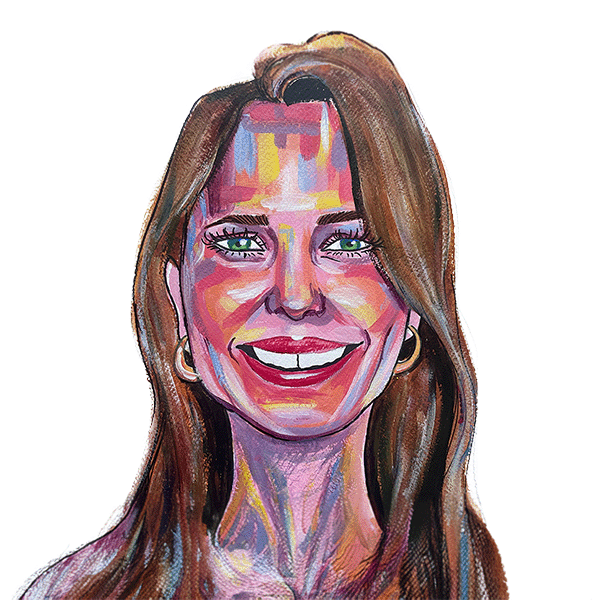Ditch The List: Rethinking Our Succession Planning Approach

In true Spotify style, we recently reviewed our succession planning process to make sure we were keeping ourselves honest. Top of mind was whether we were really working in the best way to achieve the objectives and benefits that we’d set out previously. We asked ourselves; what is the added value and impact with our succession planning process? In other words – what does successful succession planning look like to us?
The List…
Creating a list of potential successors is typical action with the best of intentions. However, lists like these come with so many familiar challenges. For example, how often is the list referred to when a business critical position becomes vacant? And what’s more (especially in a company like Spotify, where change is our constant) how likely is it that the critical role will look the same as it did when we identified potential successors for said role? Let me tell you – it’s not often and it’s not likely, even with the most positive of intentions. It turns out, many stars in the sky should align for that to happen.
Looking into our historical data, 80% of our critical roles since 2019 have been filled with external candidates and not with the successors that we had identified for these roles. We had got stuck where so many companies do: we have a fantastic list of identified successors that we just don’t use in the way it was intended. When we scrutinised further, we could identify that we simply didn’t have enough talent on the bench. Or certainly not enough talent on the bench with their helmets on, adrenaline pumping and ready to be put into the game and win!
Another element that meant we weren’t being true to our original intentions was the amount of time we spent on the process of identifying successors. We had been focusing about 85% of our time on the process of identifying critical roles and successors, and only 15% on actually developing the talent, or helping them get game-ready.
We kept the list of successors strictly confidential as one should, but with no access to the list it became just that – a stagnant and secret list, and nothing more. If no one knows who our successors are, not even our Talent Acquisition team, how are we supposed to expose our successors to challenging projects or new roles to help them grow and be ready that one day?
This legacy mindset relies almost solely on the respective HRBP and the manager, which is not a scalable or sustainable approach for a company of our size. So, how should we build a broad and diverse talent bench that is ready to rock for business critical roles today and in the future, and that is accessible to selected HR and business leaders just in time?
We decided to focus on 3 tracks:
1. Process To Progress
People and roles are dynamic, and therefore, our succession planning process should reflect that. That means not being a once-per-year process. If we could find a way for the list of critical roles and successors to be constantly updated, then we could instead focus the time on progressing them. Therefore, we are removing our bi-annual succession planning process and integrated it in our talent snapshot.
We’re very dependent on the respective manager to have regular development talks with their successors and create a development plan, but here’s where we often fall short: we don’t really know if these conversations are taking place and if actions are taken. We wanted to lower the barrier for our busy managers so we provided them with handpicked development activities for successors. They include things like individual coaching, exposure to senior management, working on high impact projects via our internal talent marketplace Echo, and other hand-picked learning activities. We provide our managers with this easily accessible smorgasbord of activities and then are very clear on our expectations that their successors should engage in at least two of these development activities during a six month period, on an ongoing basis.
We believe this simple approach has more impact than a cumbersome, admin-heavy and robust leadership development program. For a start, it would take a year of designing and building, and let’s face it, by then the world would probably have dramatically changed around us again, even if the successors were still with us patiently waiting for the opportunity to come along.
However, this approach is not something that will fix-all. We know we need to do more to accelerate the growth and readiness of our successors to be really successful, we’re not quite there yet.
2. To Share Or Not To Share – That Is The Question
Reading research reports on internal mobility we learnt that employees typically find it much easier to find a job outside of their current company and that the main blocker for internal mobility is managers who are not encouraging of their movement. But how can we best ensure that our successors are ready to rock for future business critical roles? Exposure. Exposure to new challenges, people, roles, gigs in new contexts. To build and learn from experiences and apply those learnings to future roles, a person must be exposed to these experiences first. Therefore, internal mobility is a key lever for us to drive growth and readiness of our successors, and you won’t be able to create an environment of internal mobility without exposure.
This is why sharing talents across Spotify is expected of our leaders. To be a leader at Spotify, means being a good gardener – nurturing plants in their flowerbed, and just when they are blooming, or ready to flower, actually carefully uprooting them to be planted elsewhere, where their growth can be even more spectacular. Letting go of the most beautiful plants in the flowerbed that they’ve spent time nurturing and developing is likely to be full of mixed emotions and some anxieties, but in the long run they will be able to see the benefit to the garden as a whole.
After realising the need to up our game on this side of things, we held a deep-thinking session with our senior leaders to involve and engage them in how to accelerate growth and readiness of our successors with a “sharing mindset”. We are also shining a spotlight on some of the hero gardeners at Spotify who will share their success stories and inspire others to do the same. In addition, we recently started with regular matchmaking exercises between our HRBPs and TA partners, looking at open leadership positions and our list of successors to spark internal mobility. And, bringing together our leadership teams across all business units twice a year to take part in calibration and matchmaking exercises of our successors and critical roles.
We know that the right talent, in the right place and time will accelerate our company performance, so we are striving to build leadership behaviours of growing, preparing and sharing talents across the organisation. We aim to make these behaviours a matter of habit.
3. Scouting The Organisation
While growing, preparing and sharing talents across Spotify is an important part of our leaders responsibility, we within HR hold the umbrella and are responsible to orchestrate talent growth and intelligence. So far we’ve made improvements to our performance development approach, extensive training offering and our internal talent marketplace Echo. The big question around tapping into broader and more diverse talent pools remains. How can we provide access and intelligence about our talents – how can we scout talents in our organisation in a scalable way? In Swedish we would say “utan spanning, ingen aning” and could be translated to “No scout, no clue”.
To tackle this challenge, we’re currently building a new homegrown system that scouts our organisation to identify potential successors and internal talents. The idea is that the system will help us to resource projects, fill key roles or build our talent bench for the future. We aim to have better awareness of where our key talents sit across the company and to remove our complete dependance on managers or HR knowing all our talents, that’s just not scalable.
For too long ‘high potentials’ have been a fixed group of individuals that are categorised the same way and with very little consideration of their differences or individual skill sets and potential. This approach leads to programmes that become a type of exclusive club, and we are striving to avoid this. Therefore, in our new system Scout, we will experiment with the idea of ‘Dynamic Talent Pools’ that shift in line with the needs of the organisation. This will help us find the right talent, at the time it is most needed, and will avoid the typical static view of talent.
By allowing HR and selected business leaders access to these broader talent pools we hope it can lead to more inclusion and mobility of our talents, to reallocate talents with speed to work in roles or projects where they can add most value in a specific point in time.
One Step On Our Succession Planning Journey
Admittedly, we may have fallen into one or two of the common pitfalls in the past. However, to us, successful succession planning means focusing on accelerating growth and readiness of our talent bench, sharing our successors and providing a tool to access a more diverse talent bench for our leaders just in time when they need it. And we hope these three areas of focus will help us along the next step of our Succession Planning journey. Once again, to be continued…



